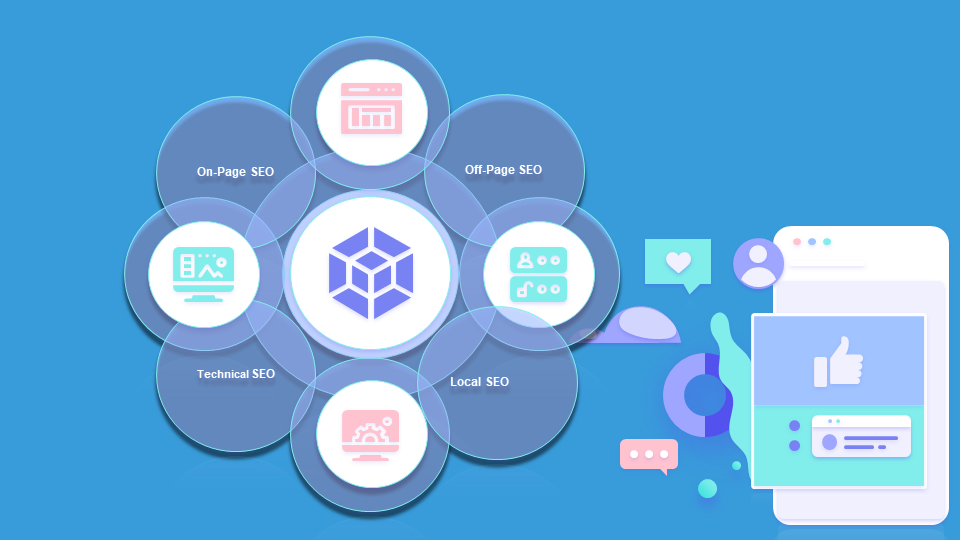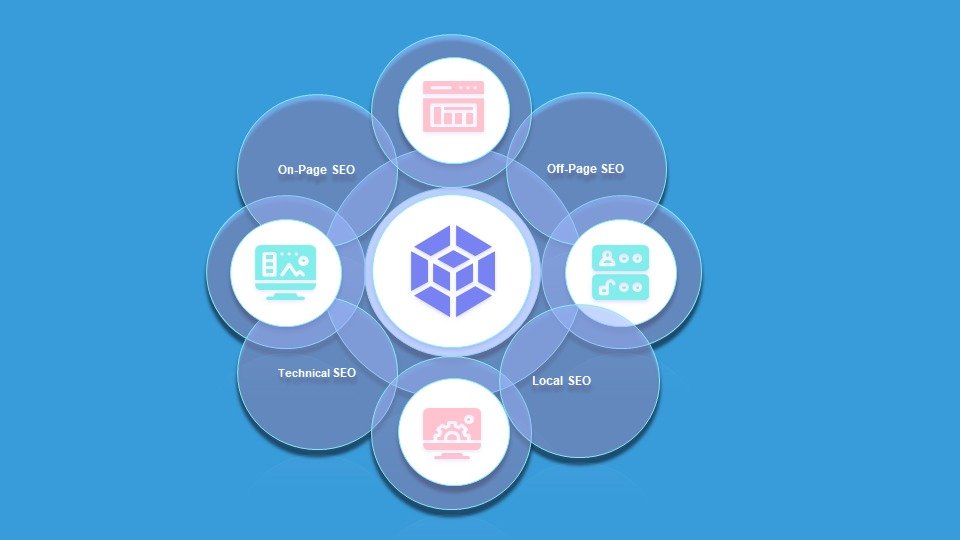What is SEO?
SEO (Search Engine Optimization) is a set of strategies and techniques used to improve the ranking of your website on search engines like Google, Bing, or Yahoo. The goal of SEO is to drive and increase organic (non-paid) traffic to a website.
Types of SEO:
On-Page SEO: On-page SEO is related to all the optimizations done directly on the website's pages to improve its search engine rankings. These optimizations target to make the website more search engine-friendly and user-friendly.
These aspects are included in on-page SEO:
1. Keyword Research: Identifying relevant to your niche or business and valuable keywords that potential visitors may use to search the website.
2. Content Optimization: Creating high-quality, informative, and attractive content that increases the response time by the users.
3. Title Tags and Meta Descriptions: Writing unique and best descriptive title tags and meta descriptions for each web page to give search engines and users a clear understanding of the content of the page.
4. URL Structure: Ensuring that the website's URLs are relevant, and include target keywords as much as possible.
5. Heading Tags: Using heading tags (H1, H2, H3, H4, etc.) to structure the content and make it easier for search engines to understand the hierarchy.
6. Internal Linking: Creating links within the website that connect pages related to each other and help users and search engines navigate the site easily.
7. Image Optimization: Optimize images with alt tags and reduce their size to improve the page loading speed of the website.
Off-Page SEO:
Off-page SEO involves elements outside of the website to improve its online reputation and authority. Off-page SEO is mostly focused on building quality backlinks, which are links from other websites that point to your website. A few aspects of off-page SEO include:
1. Backlink Building: Earning backlinks from high-ranking and relevant websites to show search engines that your website is having trustworthy and valuable content.
2. Social Media Marketing: Promoting content on social media platforms to increase reach and attract more visitors to the website.
3. Online Reviews and Citations: getting positive reviews and listing in online directories to enhance the website's value and local search visibility.
4. Guest posting: Writing and publishing articles on other websites in your industry to establish authority and gain Backlinks.
5. Influencer Marketing: Partnering with industry experts and influencers to promote your content.
Technical SEO:
Technical SEO of a website is to improve its crawl ability, indexation, and overall performance. This type of SEO ensures that search engines can efficiently access and understand the content of the website.
Aspects of technical SEO:
1. Website Speed: Improving page loading times to enhance user experience and search engine rankings.
2. Mobile-Friendliness: Ensuring that the website is mobile-friendly, as many internet users browse on smartphones and tablets. Search engines prefer mobile-friendly websites.
3. XML Sitemap: Creating an XML sitemap for search engines which helps them understand the website's structure and content.
4. Robots.txt: Using the robots.txt file to instruct search engines on which pages should be crawled.
5. SSL Certificate: HTTPS certification to encrypt data and establish a secure connection between the website and its visitors.
6. Canonicalization: Using canonical tags to indicate the preferred version of duplicate content to search engines.
Local SEO:
Local SEO focuses on a website appearing in local search results for location-specific queries. This type of SEO is crucial for businesses targeting a local audience. Aspects of local SEO include:
1. Google My Business (GMB): Creating and optimizing a GMB listing to appear in local Google search packs and Google Maps.
2. Local Citations: Consistently listing the business's name, address, and phone number (NAP) on various online directories and platforms of related niches.
3. Local Keywords: insert location-based keywords in the website's content and meta tags, like area names.
4. Customer Reviews: loyal customers leave positive reviews on GMB and other review platforms.
5. Local Link Building: creating backlinks from local websites and directories increase local search authority.
Conclusion:
SEO is a dynamic and crucial digital marketing practice that impacts a website's online visibility, traffic, and sales. By understanding and implementing the different types of SEO and their respective aspects, businesses and website owners can improve their search engine rankings, reach their related audience, and grow their online presence. It's crucial to stay updated with the latest SEO trends and changes to maintain a competitive edge in the ever-evolving digital landscape.
Thanks for reading






Comments (0)
Post a Comment